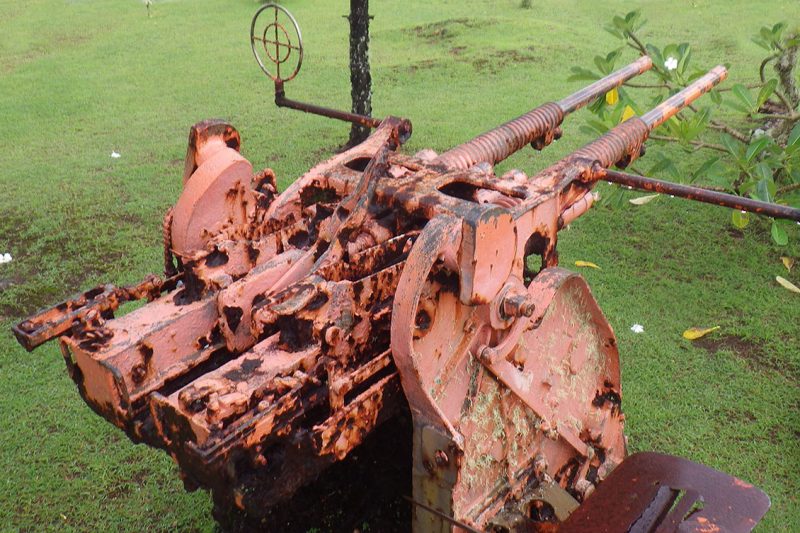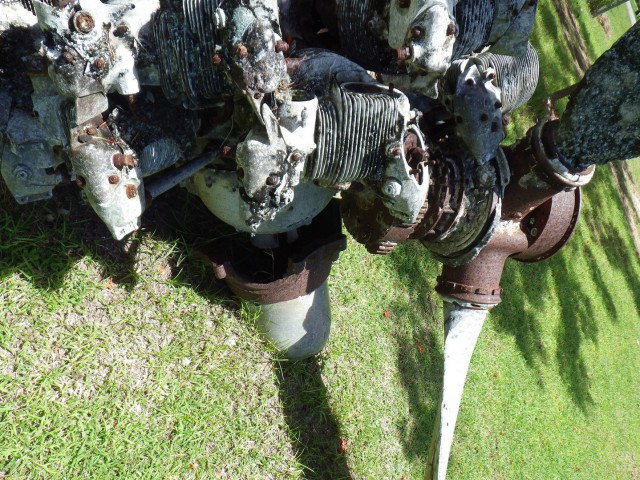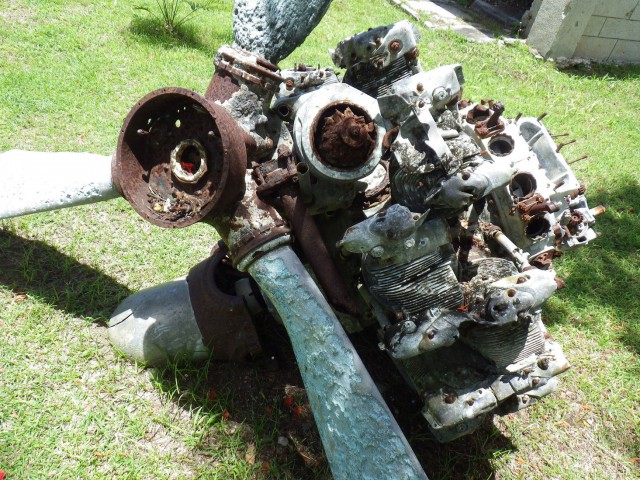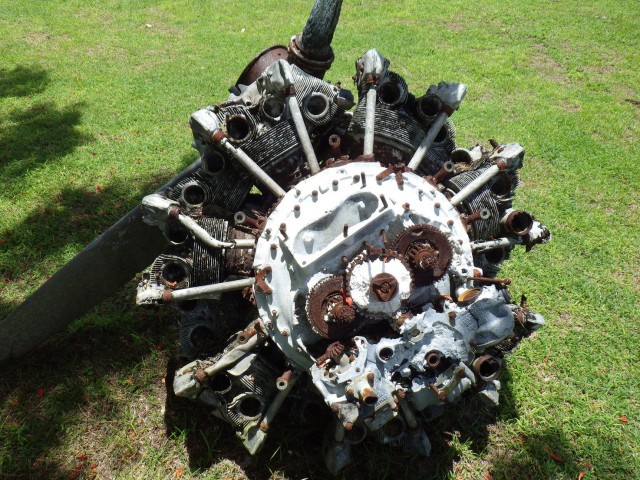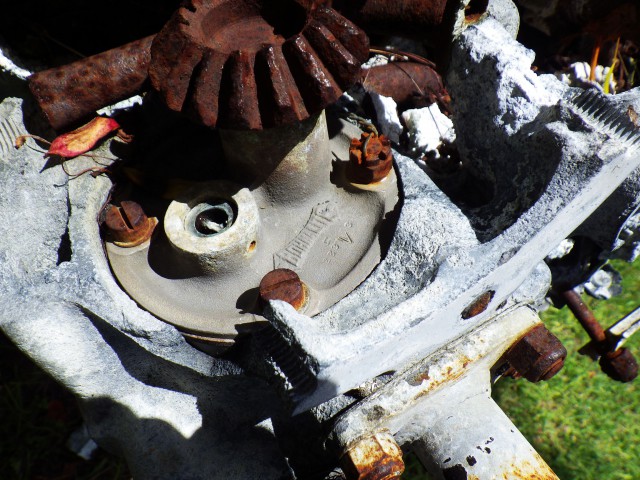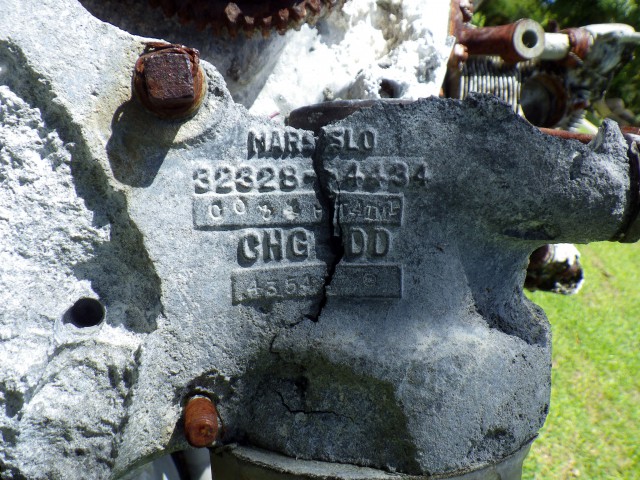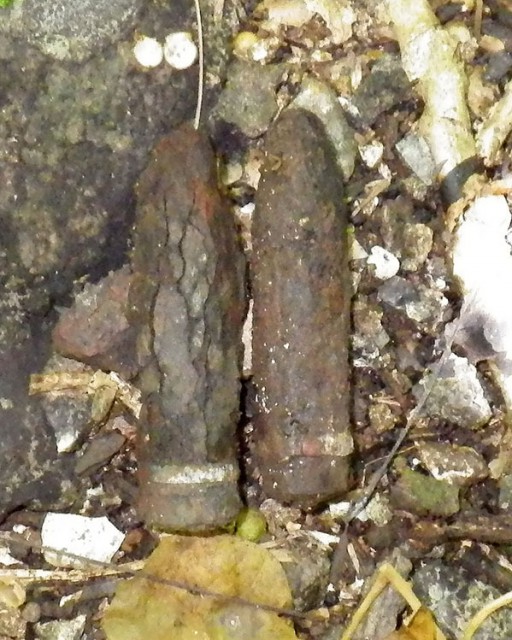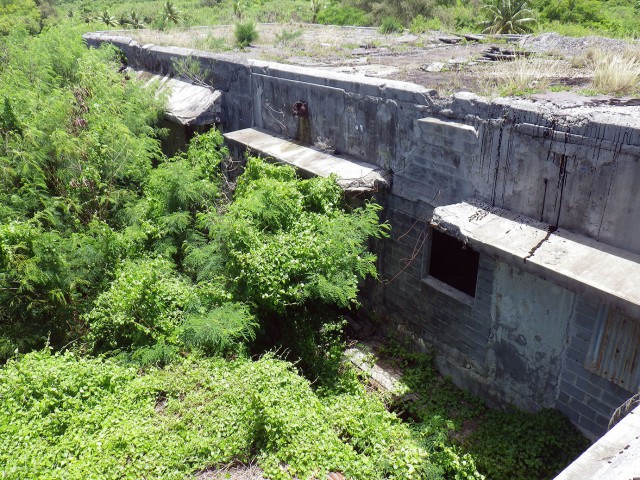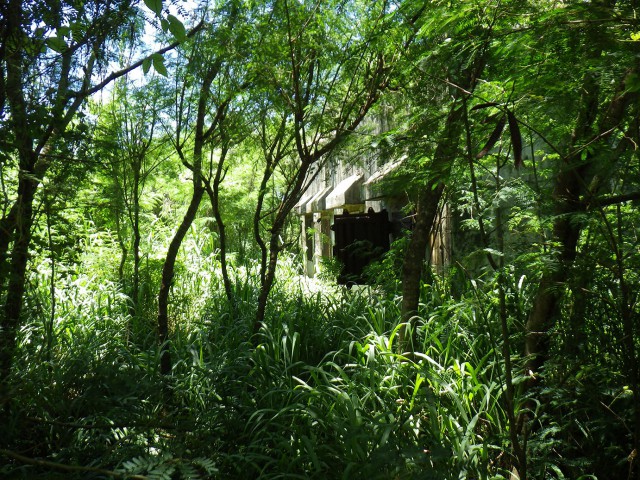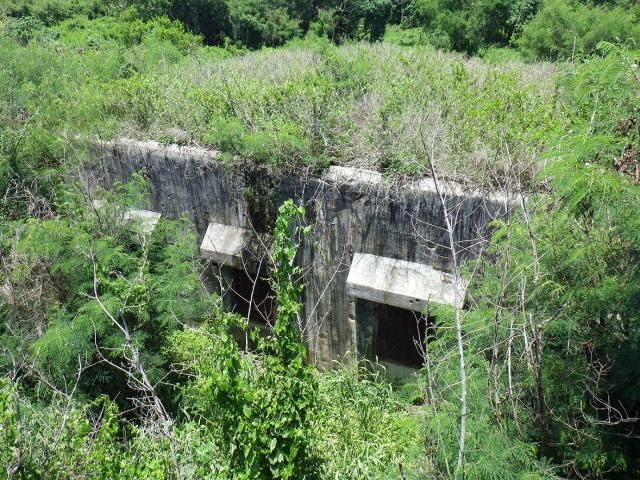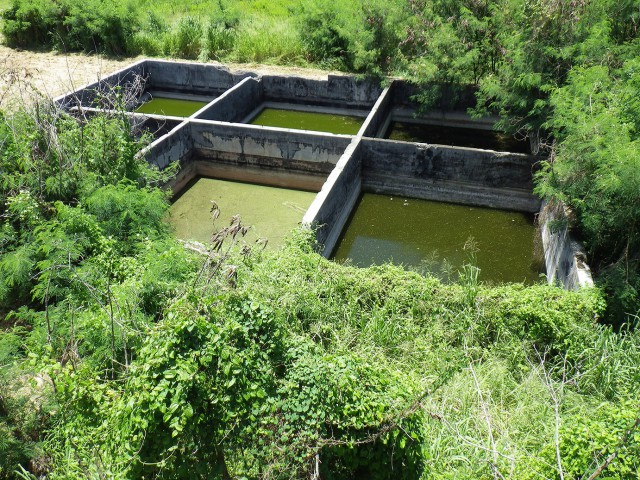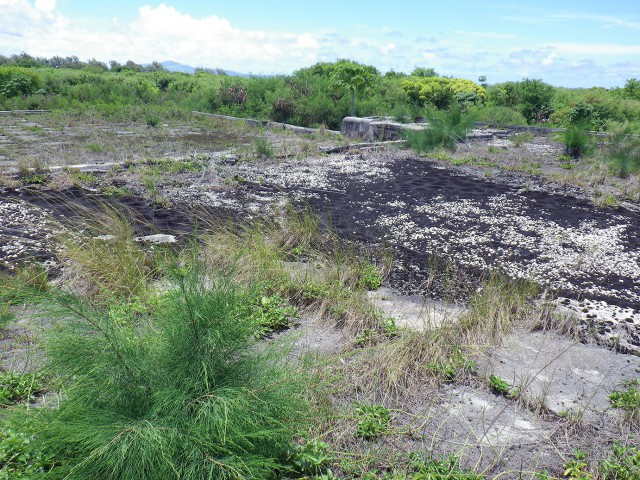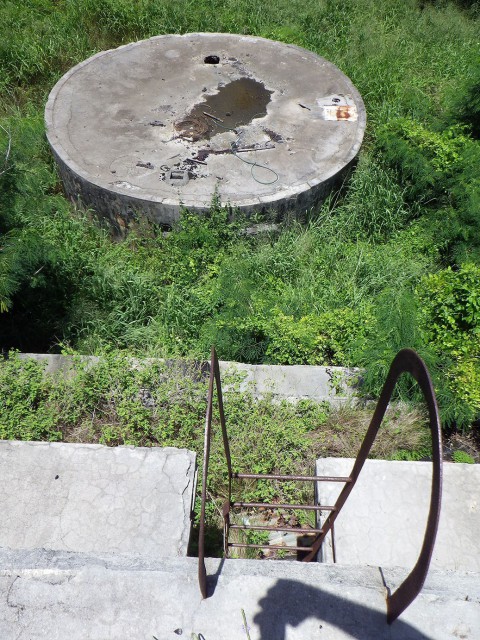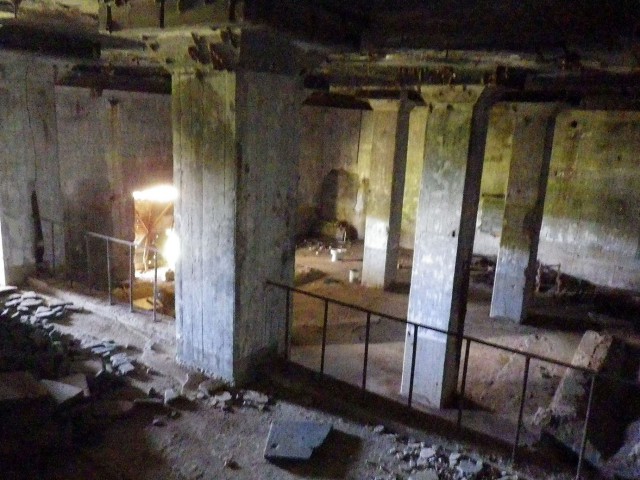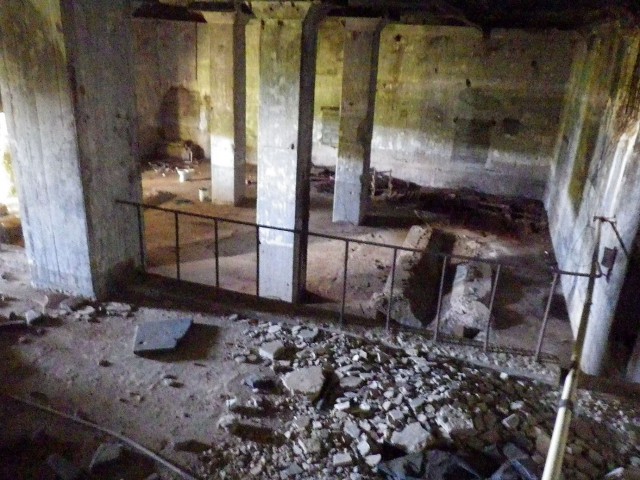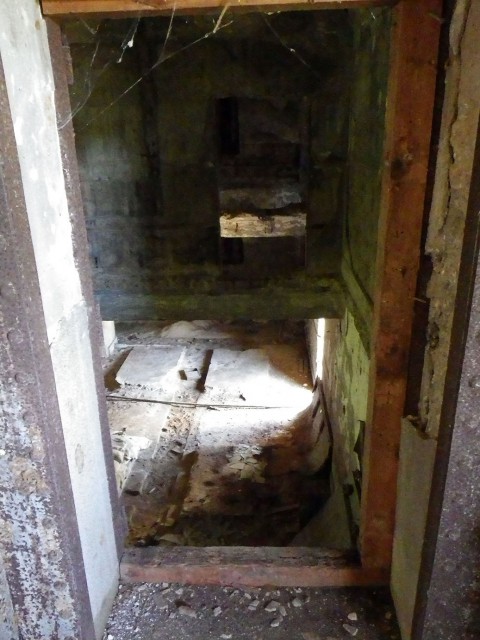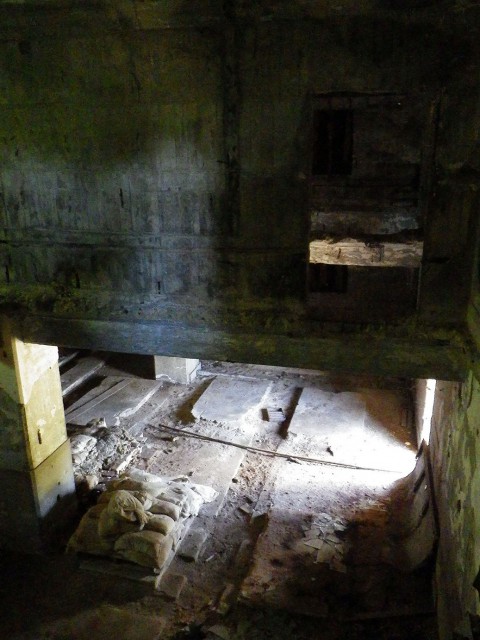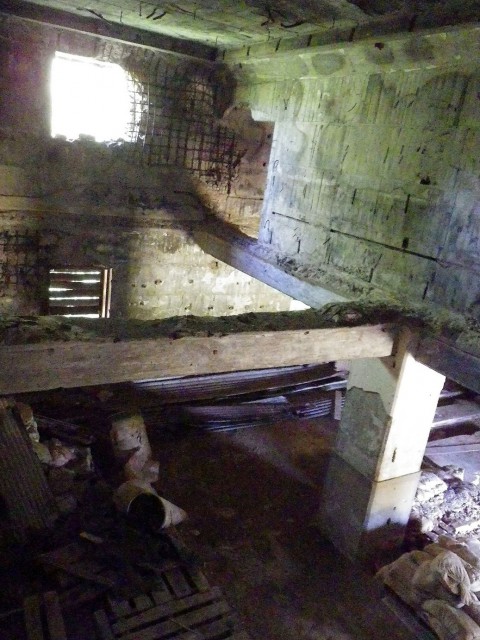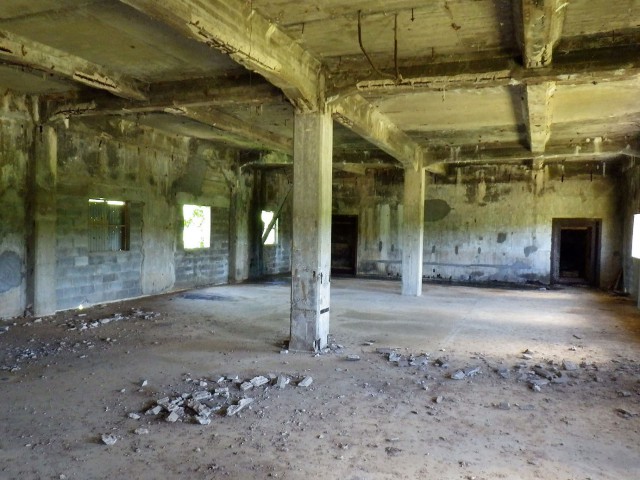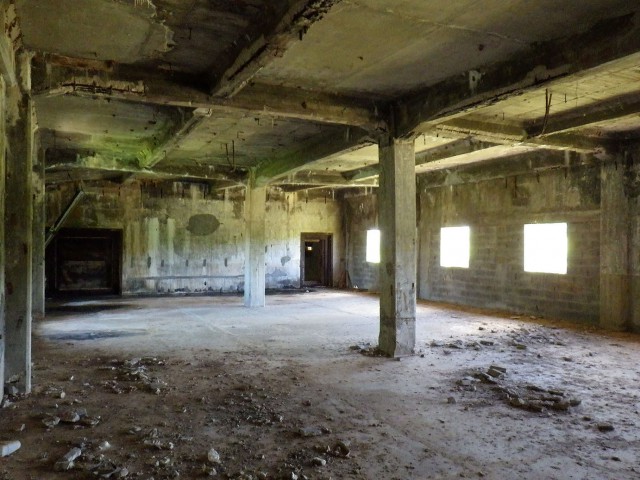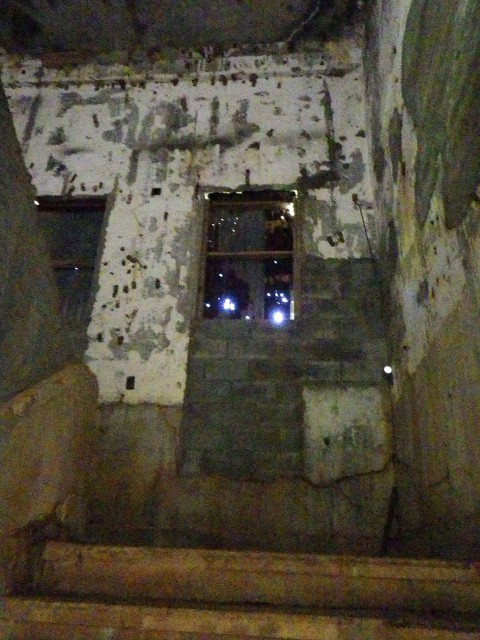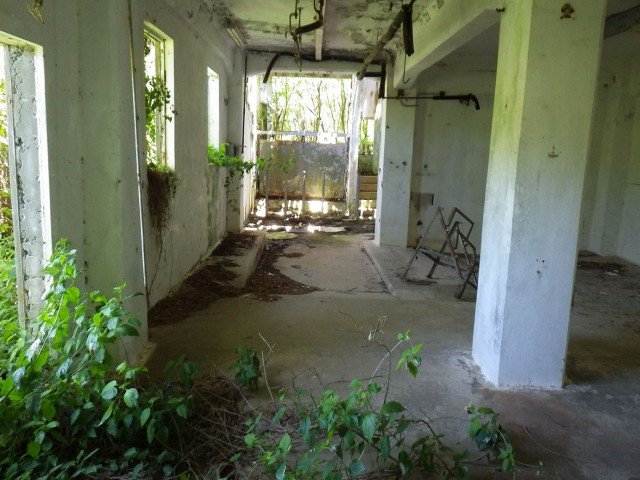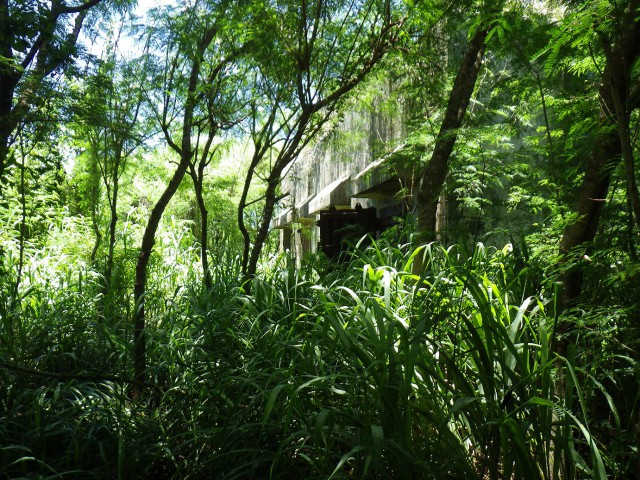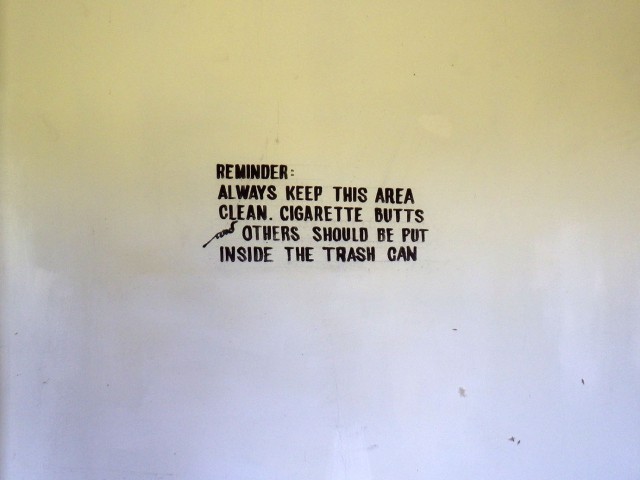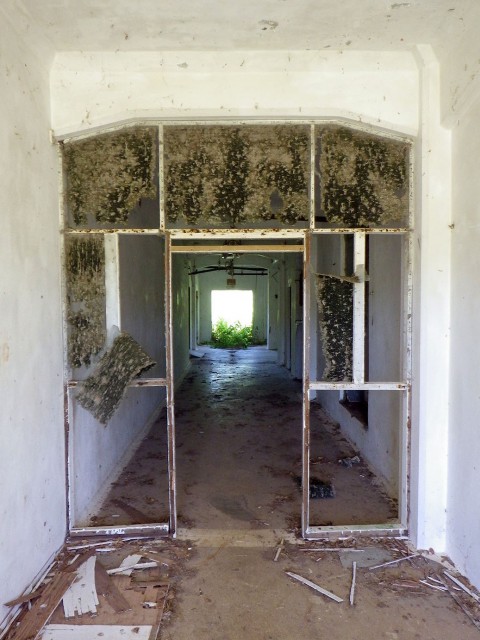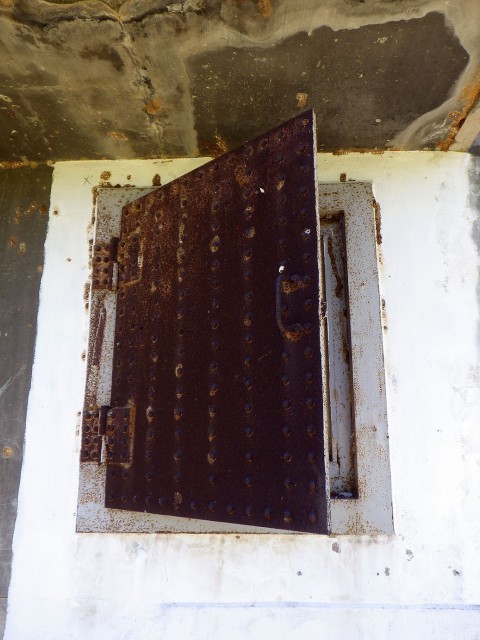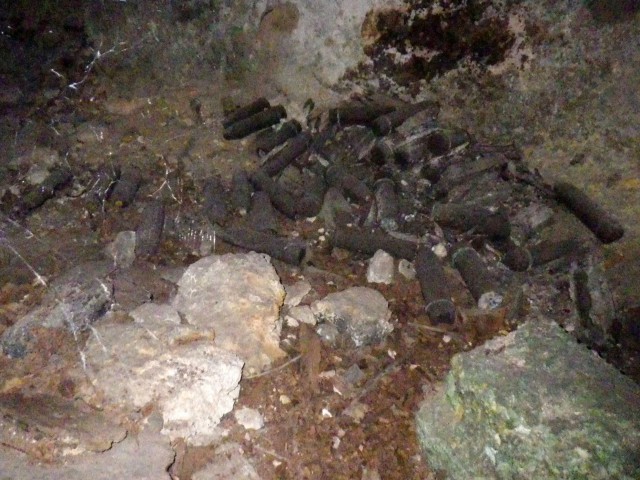We took a trip back to Saipan and then on to the nearby island of Tinian from which the US operated the busiest airfield of WWII and launched the atomic attacks on Hiroshima and Nagasaki Japan.
Due to a much smaller population, fewer visitors and a still continuing military utilization, Tinian is even less rebuilt than Saipan.
 Panorama from inside the cabin of the Piper Cheyenne 6 single engine aircraft that is required to access Tinian from Saipan. Ferry service to Tinian was stopped several years ago due to its losing over $1M a year in revenues.
Panorama from inside the cabin of the Piper Cheyenne 6 single engine aircraft that is required to access Tinian from Saipan. Ferry service to Tinian was stopped several years ago due to its losing over $1M a year in revenues.
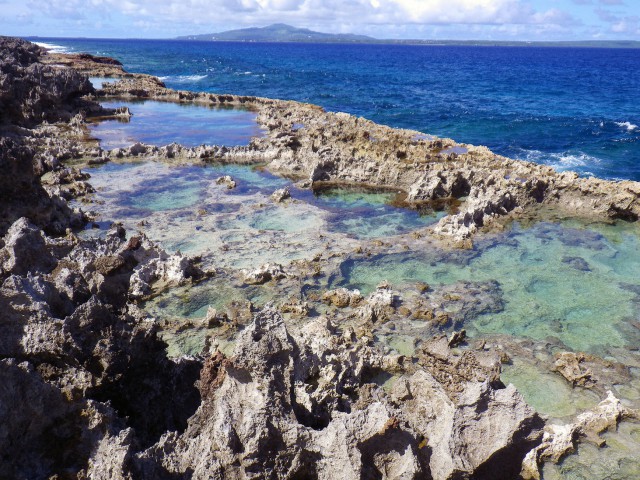 A view off the reef on the east coast of Tinian, across the strait to Saipan.
A view off the reef on the east coast of Tinian, across the strait to Saipan.
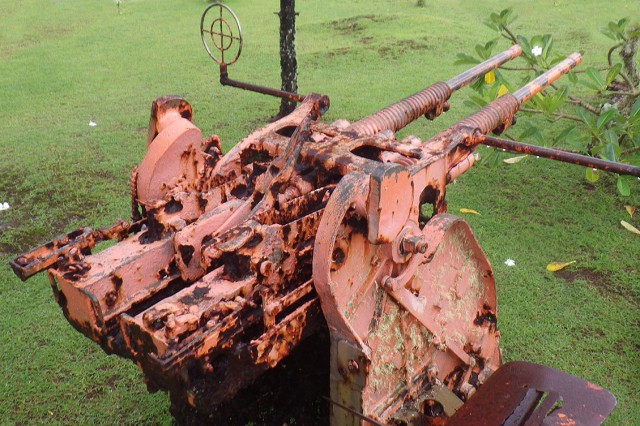 Upon landing at the small airport in Tinian, you are immediately greeted by an old Japanese Anti-Aircraft Cannon on display outside the terminal.
Upon landing at the small airport in Tinian, you are immediately greeted by an old Japanese Anti-Aircraft Cannon on display outside the terminal.
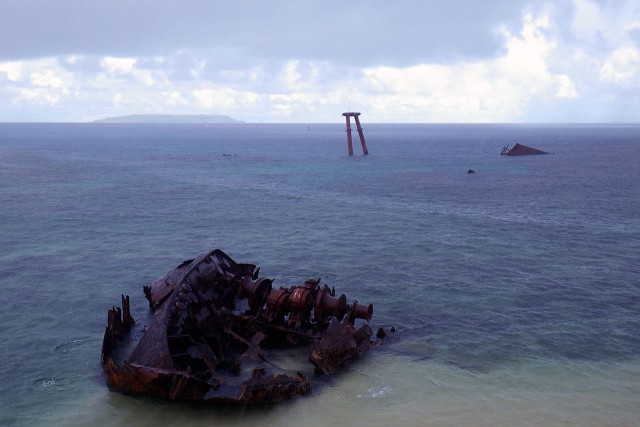 From San Juan, the city on the south side of Tinian looking towards the uninhabited island of Aguijan. There are a few old wrecks rusting in the harbour.
From San Juan, the city on the south side of Tinian looking towards the uninhabited island of Aguijan. There are a few old wrecks rusting in the harbour.
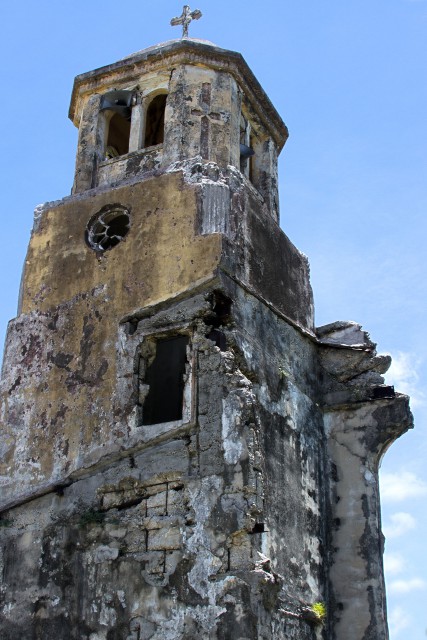 The ruins of the old church in San Juan destroyed during the invasion. There is a shiny new(er) steel church standing in the shadow of the ruins.
The ruins of the old church in San Juan destroyed during the invasion. There is a shiny new(er) steel church standing in the shadow of the ruins.
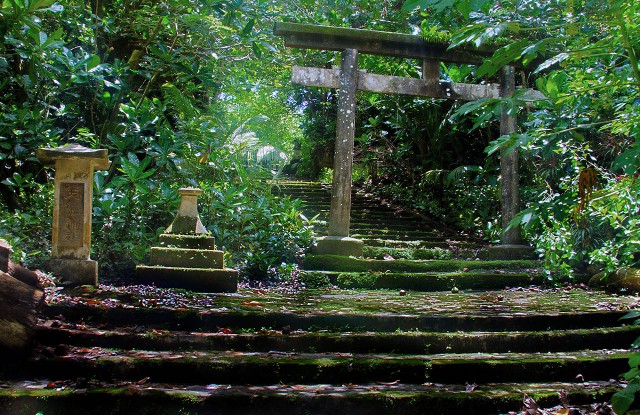 Tinian and Saipan were both taken by the Japanese during the early 20th century and so had substantial Japanese populations. This pre-war Shinto Shrine still stands in the jungle and may be one of the most atmospheric and moody places I’ve ever stumbled upon.
Tinian and Saipan were both taken by the Japanese during the early 20th century and so had substantial Japanese populations. This pre-war Shinto Shrine still stands in the jungle and may be one of the most atmospheric and moody places I’ve ever stumbled upon.
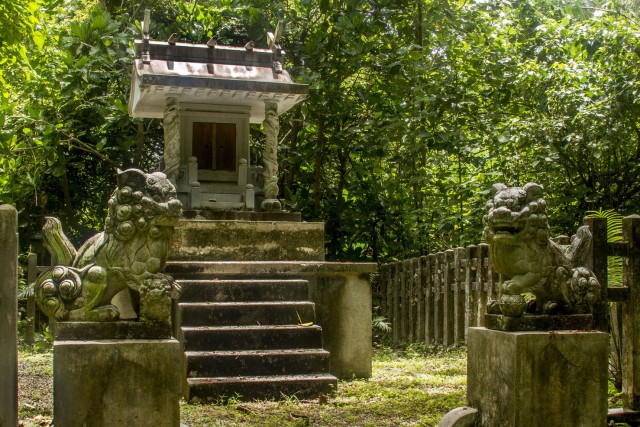 The Guardians of the shrine at the top of the stairs, the left is the “Shisa” with its mouth closed, the right is the guardian dog with its mouth open.
The Guardians of the shrine at the top of the stairs, the left is the “Shisa” with its mouth closed, the right is the guardian dog with its mouth open.
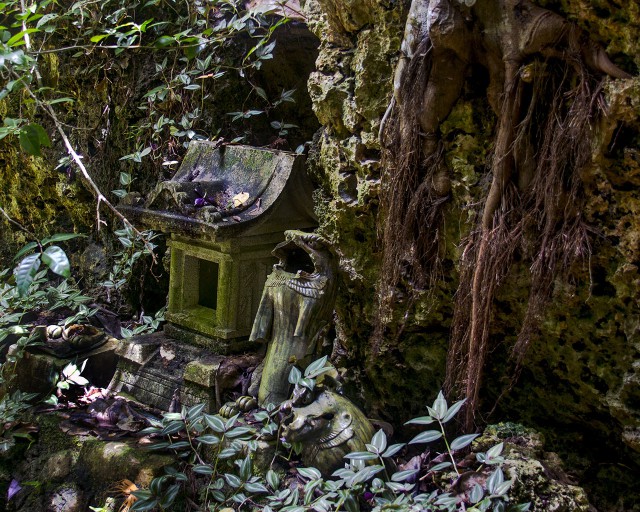 Next to the main shrine are smaller shrines slowly being reclaimed by the jungle.
Next to the main shrine are smaller shrines slowly being reclaimed by the jungle.
Next Page: An Abandoned WWII Airplane Engine
Pratt and Whitney R-1830 Twin Wasp engine
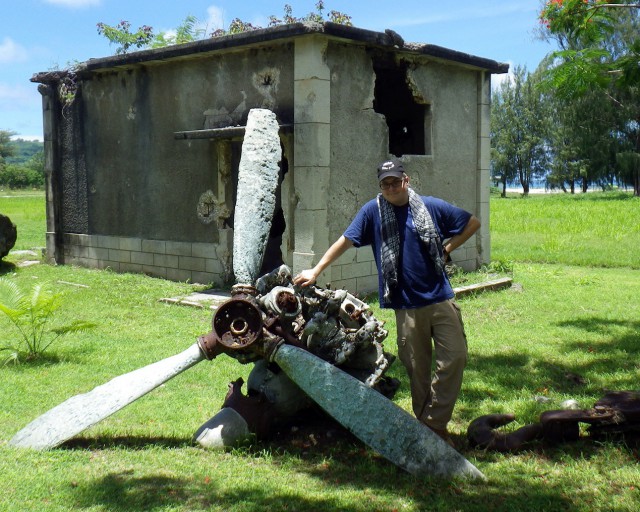 Near the beach in San Juan are the remains of this American WWII engine, which I’ve tentatively identified as a Pratt and Whitney R-1830 Twin Wasp. I wouldn’t know how to identify what kind of aircraft this one came from because it was used on many, including cargo aircraft like the DC-3, fighter aircraft like the P-36 Skyhawk and bombers such as the B-24 Liberator.
Near the beach in San Juan are the remains of this American WWII engine, which I’ve tentatively identified as a Pratt and Whitney R-1830 Twin Wasp. I wouldn’t know how to identify what kind of aircraft this one came from because it was used on many, including cargo aircraft like the DC-3, fighter aircraft like the P-36 Skyhawk and bombers such as the B-24 Liberator.
Next page: Atomic bomb loading pit and much more!
Atomic Bomb loading pit, Japanese Fuel and Ammo Storage, and UXO
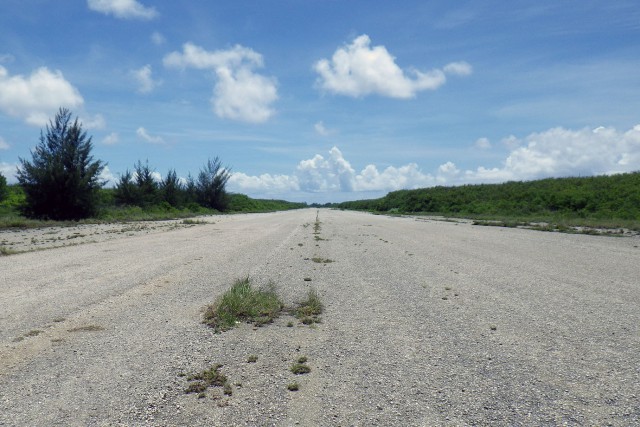 A view driving my rental car down the WWII runway Able in the North Field. The runway is gargantuan and in order to support heavy bombers loaded down with bombs and fuel, it nearly bisects the entire island.
A view driving my rental car down the WWII runway Able in the North Field. The runway is gargantuan and in order to support heavy bombers loaded down with bombs and fuel, it nearly bisects the entire island.
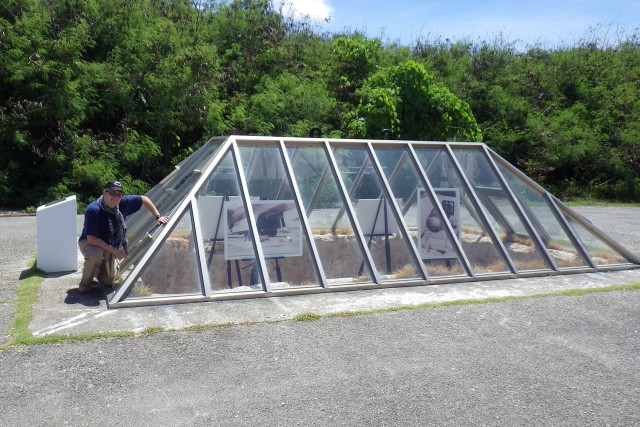 Myself and the “Little Boy” atom bomb loading pit.
Myself and the “Little Boy” atom bomb loading pit.
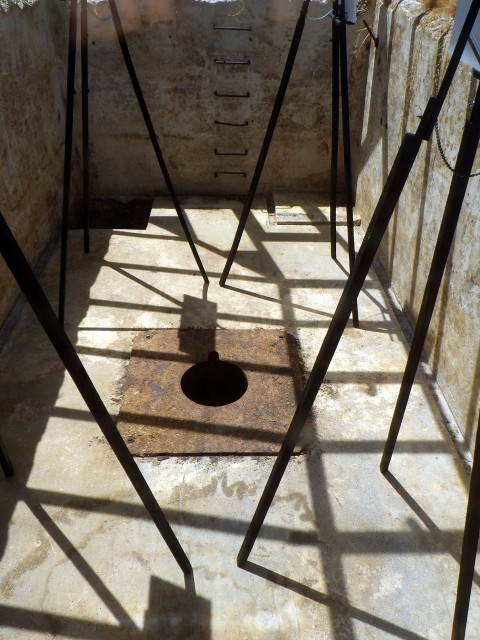 Interior of the “Little Boy” pit.
Interior of the “Little Boy” pit.
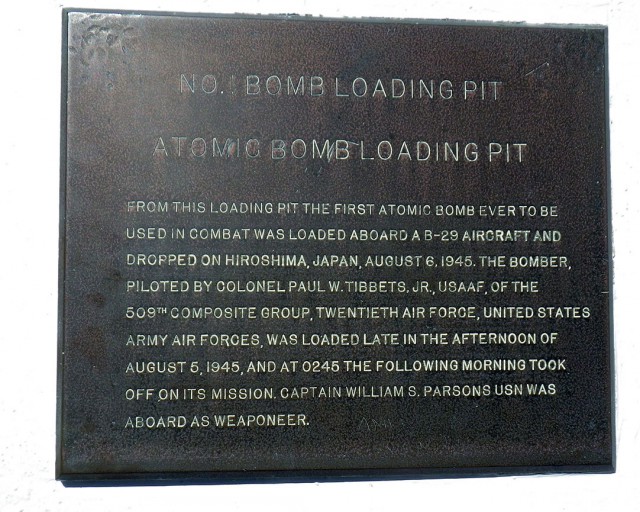 Plaque on the outside of the “Little Boy” pit.
Plaque on the outside of the “Little Boy” pit.
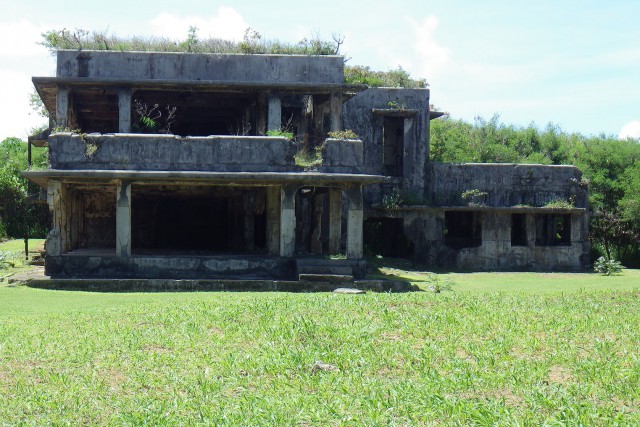 Abandoned and nearly destroyed Japanese Air Command Complex in the North Field.
Abandoned and nearly destroyed Japanese Air Command Complex in the North Field.
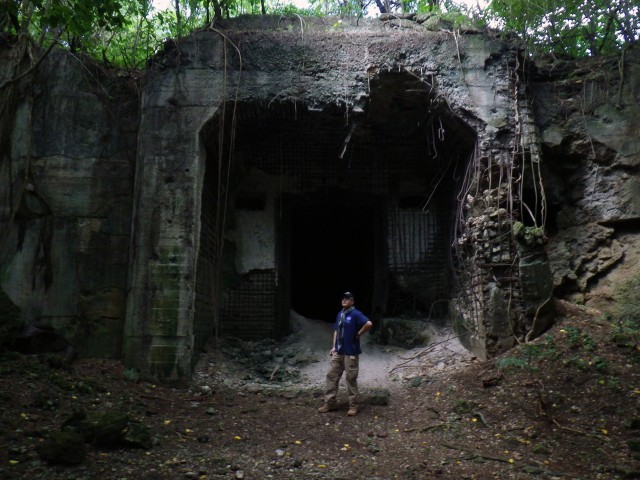 Myself outside a heavily fortified Japanese Fuel Bunker. The fuel inside was ignited and burned so furiously that the supporting rebar and equipment inside the bunker melted and gave way.
Myself outside a heavily fortified Japanese Fuel Bunker. The fuel inside was ignited and burned so furiously that the supporting rebar and equipment inside the bunker melted and gave way.
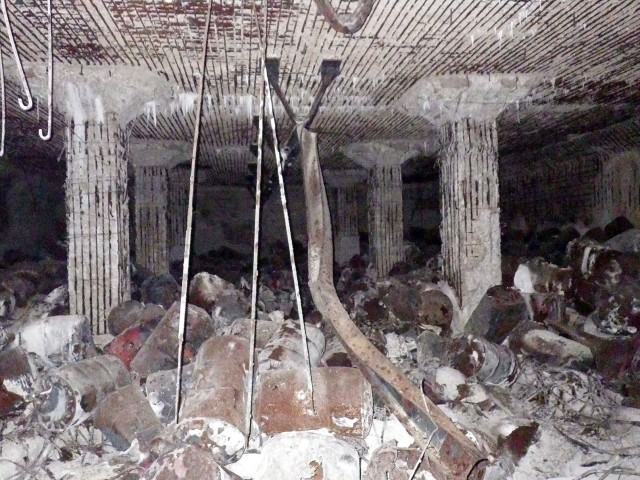 Interior of the fuel bunker. It was as chunks of concrete pelted me on the head from above that I realized I should probably turn around and leave immediately.
Interior of the fuel bunker. It was as chunks of concrete pelted me on the head from above that I realized I should probably turn around and leave immediately.
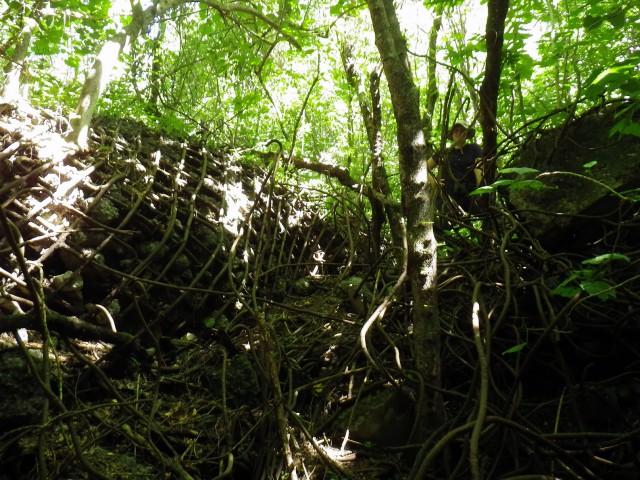 The nearby ammo bunker was identical to the fuel bunker as seen above, but as it took a direct hit from a bomb and detonated, there’s not much left. Here is my wife standing in the pile of rubble that USED to be this awesome bunker. What appear to be vines in this picture are actually thousands of twisted strands of re-bar from the bunker explosion which peeled the roof back like a sardine can. The whole area is littered with unexploded munitions from inside the bunker, as you will see later.
The nearby ammo bunker was identical to the fuel bunker as seen above, but as it took a direct hit from a bomb and detonated, there’s not much left. Here is my wife standing in the pile of rubble that USED to be this awesome bunker. What appear to be vines in this picture are actually thousands of twisted strands of re-bar from the bunker explosion which peeled the roof back like a sardine can. The whole area is littered with unexploded munitions from inside the bunker, as you will see later.
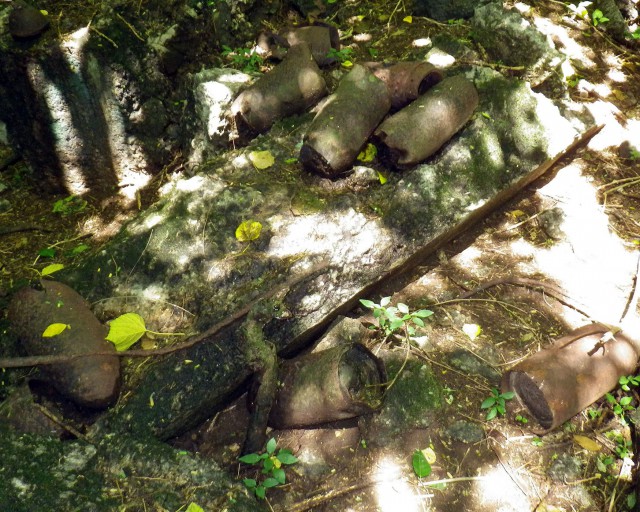 Some of the unexploded munitions from the bunker explosion. Exploring these islands I sometimes encounter unexploded munitions, which I have a strict policy of never messing with. Military EOD teams sometimes do sweeps in order to dispose of ordinance they find, but so much remains that it’s a regular occurrence.
Some of the unexploded munitions from the bunker explosion. Exploring these islands I sometimes encounter unexploded munitions, which I have a strict policy of never messing with. Military EOD teams sometimes do sweeps in order to dispose of ordinance they find, but so much remains that it’s a regular occurrence.
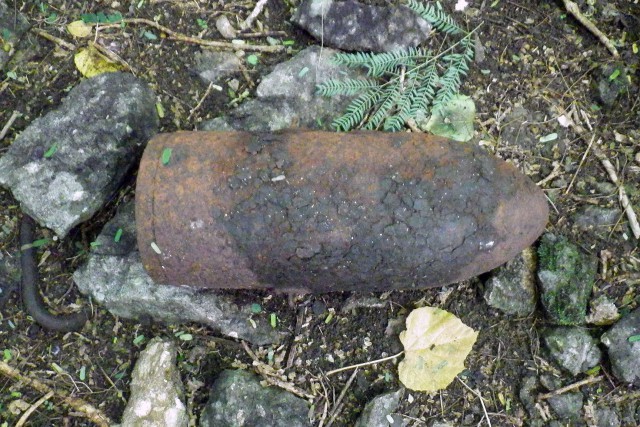
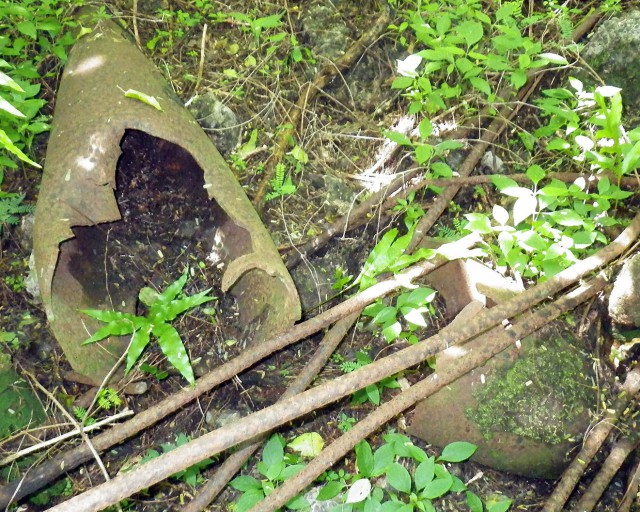 This is an air dropped bomb that failed to detonate, though it’s broken in two. I believe it was dropped, as the area on the back where the fins were mounted shows they were sheared off.
This is an air dropped bomb that failed to detonate, though it’s broken in two. I believe it was dropped, as the area on the back where the fins were mounted shows they were sheared off.
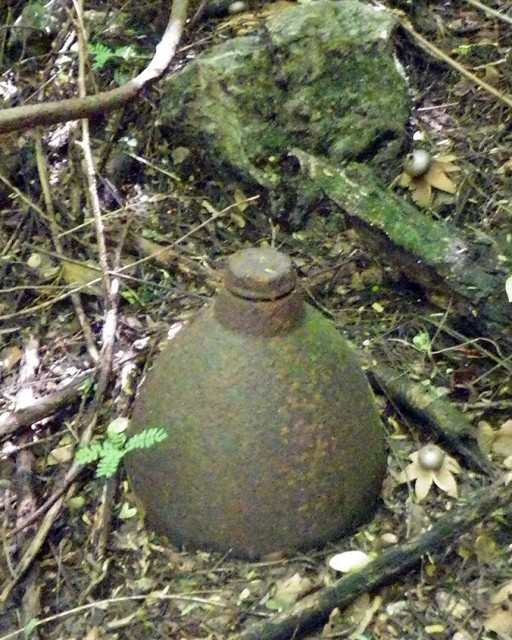 This is a fuse to a Japanese bomb or mortar. Also you can see some earthstar mushrooms that were growing in the area.
This is a fuse to a Japanese bomb or mortar. Also you can see some earthstar mushrooms that were growing in the area.
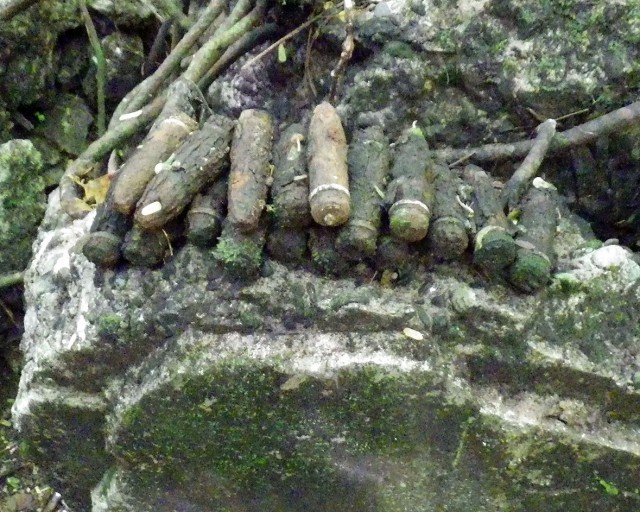 These are cannon rounds, possibly for the Japanese Zeros and other fighter aircraft that were stationed here before the invasion.
These are cannon rounds, possibly for the Japanese Zeros and other fighter aircraft that were stationed here before the invasion.
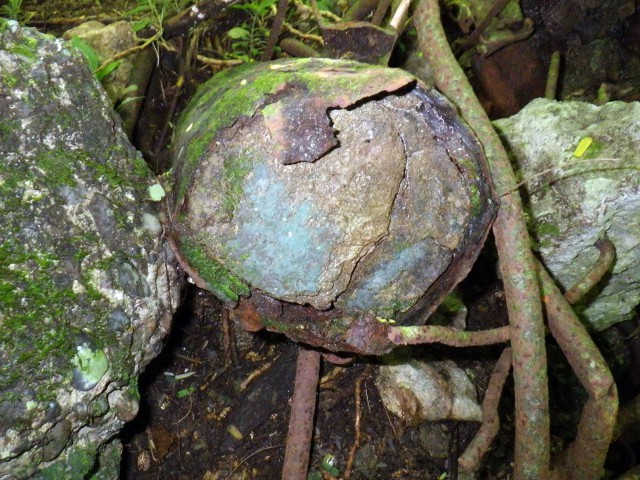 Here you can see a torn open artillery shell with the undetonated high explosive still exposed on the inside.
Here you can see a torn open artillery shell with the undetonated high explosive still exposed on the inside.
Next page a Japanse build then American operated communications complex
Japanese Communications Complex commandeered by US forces
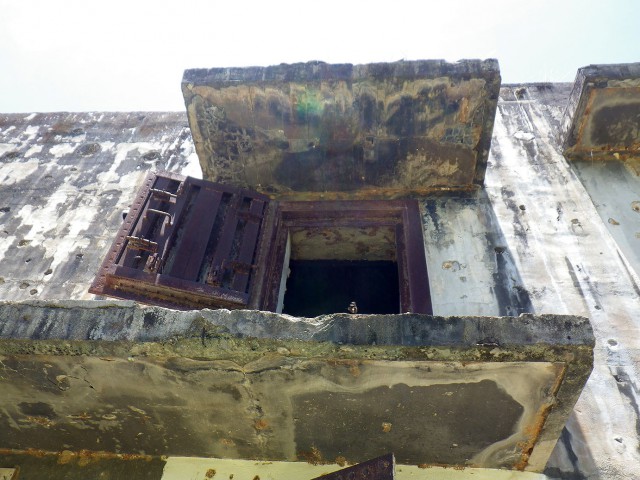 Parts of the original Japanese structure showing their characteristic blast doors.
Parts of the original Japanese structure showing their characteristic blast doors.
Next page (last) the remains of an Amtrac
American AMTRAC amphibious landing craft hulk
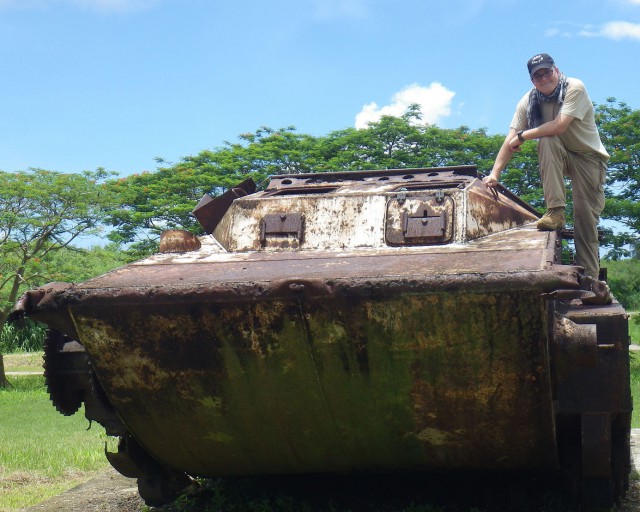 Found this rusting hulk on a concrete slab in the north field near where the initial landing occurred. The vines in the troop carrying area appear to be ready to make an invasion of their own. American forces used these lightly armoured amphibious vehicles during the invasions of Guam, Saipan and Tinian.
Found this rusting hulk on a concrete slab in the north field near where the initial landing occurred. The vines in the troop carrying area appear to be ready to make an invasion of their own. American forces used these lightly armoured amphibious vehicles during the invasions of Guam, Saipan and Tinian.
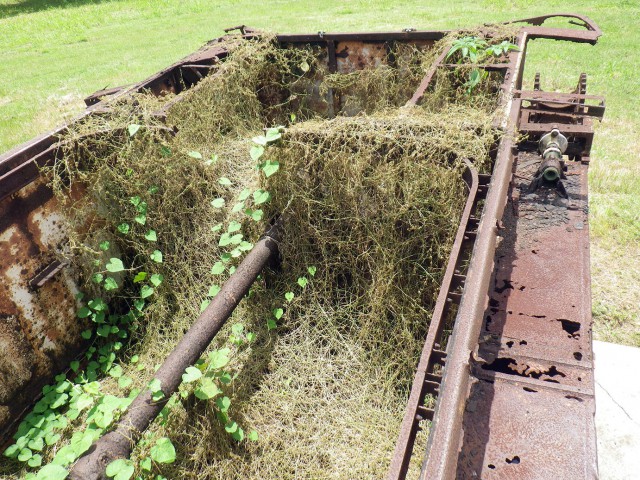
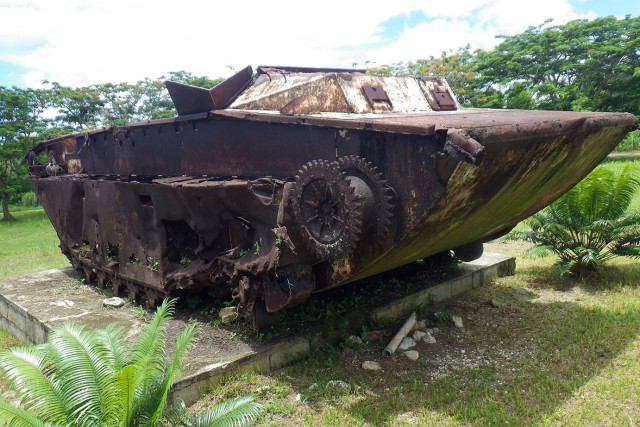
Japanese RADAR remains and hidden artillery stash
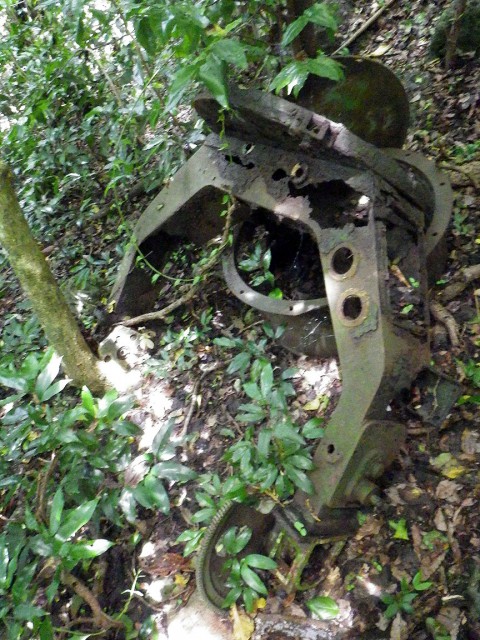 I had GPS coordinates to the remains of a Japanese RADAR installation that had been blasted off the cliff above it. My wife and I trekked through the jungle and found the elevation gimbal and remains of the azimuth gear quite easily.
I had GPS coordinates to the remains of a Japanese RADAR installation that had been blasted off the cliff above it. My wife and I trekked through the jungle and found the elevation gimbal and remains of the azimuth gear quite easily.
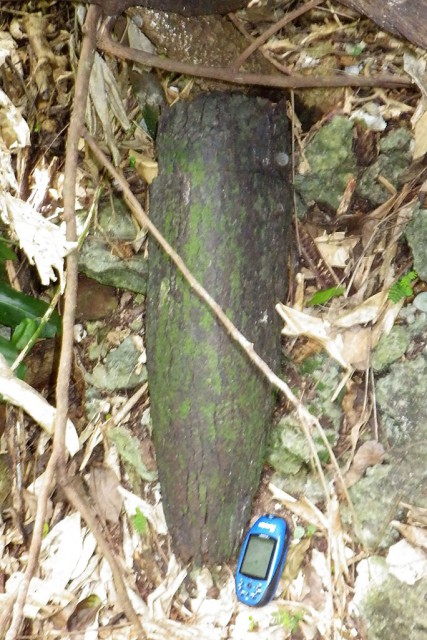 While tromping through the jungle in search of the RADAR, I came across this large artillery shell laying in the leaves. My GPS is for scale.
While tromping through the jungle in search of the RADAR, I came across this large artillery shell laying in the leaves. My GPS is for scale.
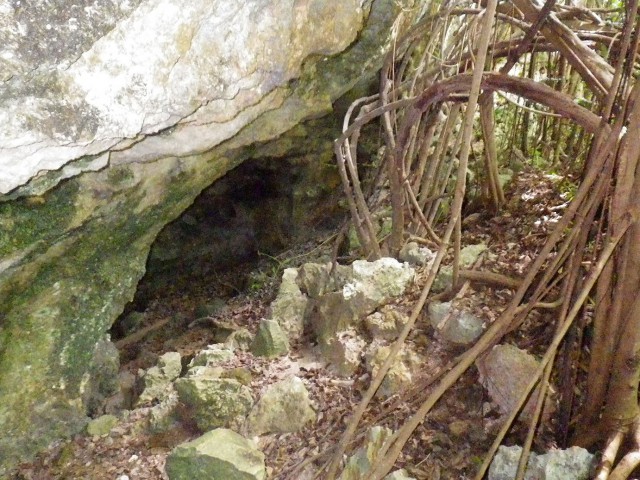 At the base of the cliff, well off any trail I found this interesting looking cave nearly hidden by the vines. I didn’t have my flashlight with me but I decided to peek inside and what do I find?
At the base of the cliff, well off any trail I found this interesting looking cave nearly hidden by the vines. I didn’t have my flashlight with me but I decided to peek inside and what do I find?
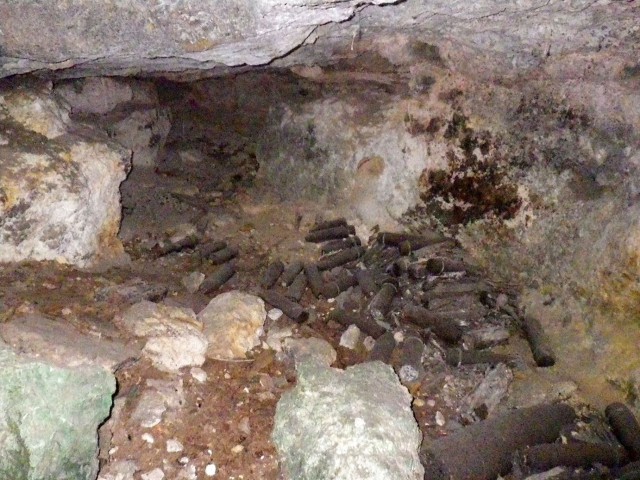 A hidden cache of Japanese artillery shells! They must have hurriedly hidden them here just prior to the invasion.
A hidden cache of Japanese artillery shells! They must have hurriedly hidden them here just prior to the invasion.
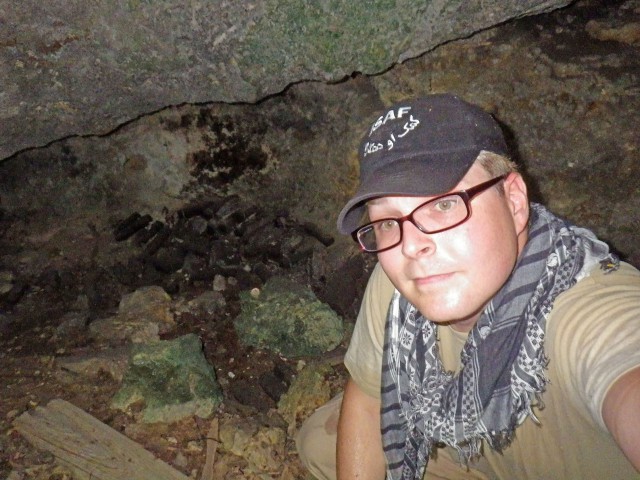 It was a very humid and sweaty hike. I’m so glad the mosquitos were not out.
It was a very humid and sweaty hike. I’m so glad the mosquitos were not out.
Written by Devon Pike
Reproduced with permission on War History Online
